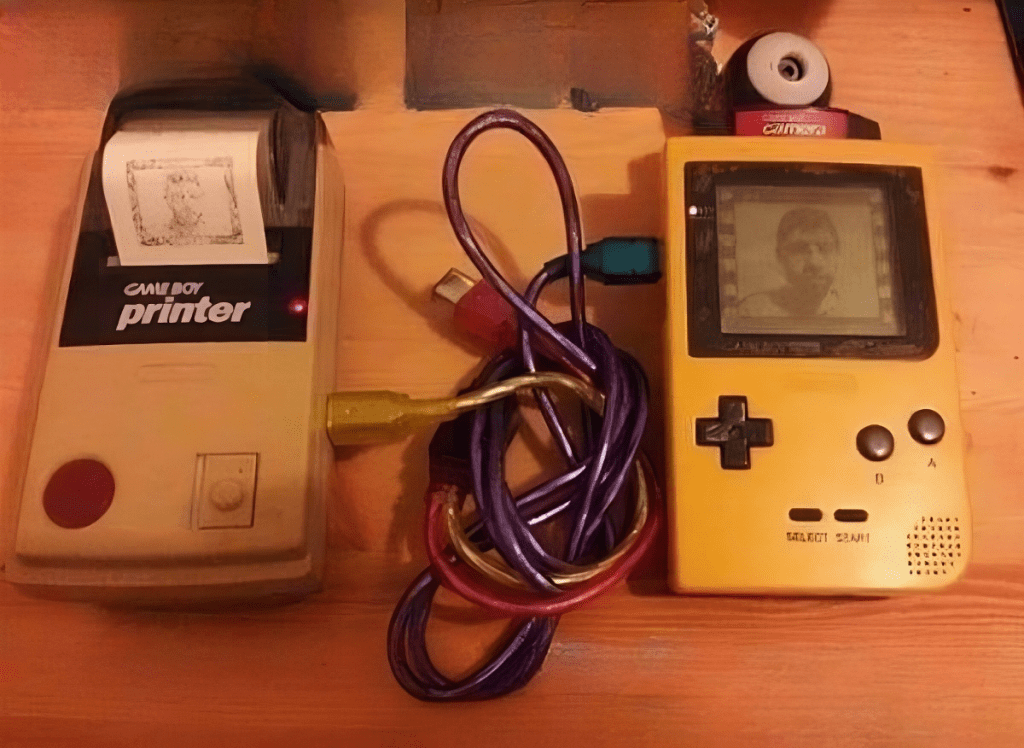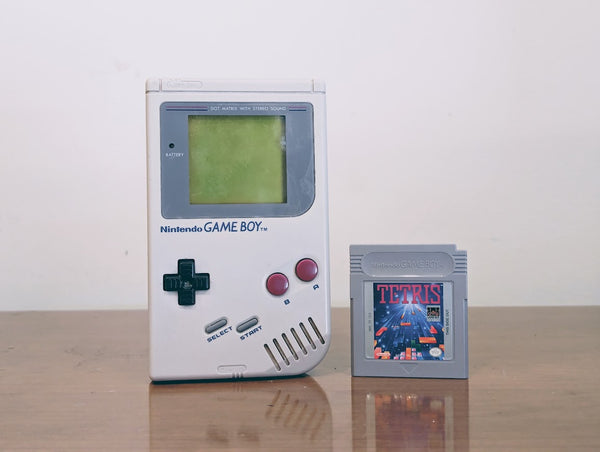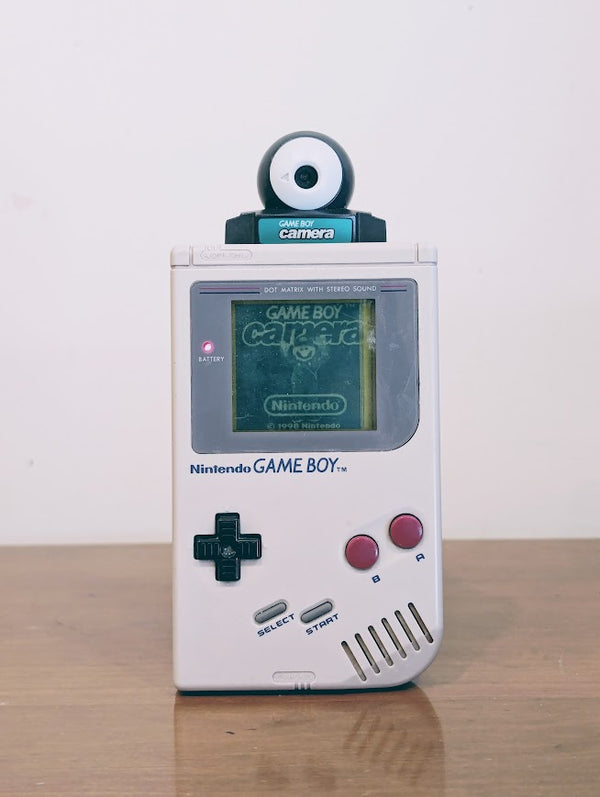The Nintendo Game Boy, a groundbreaking handheld console introduced in 1989, took the gaming world by storm, thanks to its portability and swappable cartridges. However, Nintendo’s vision for the Game Boy went beyond gaming, leading to the release of two quirky accessories: the Game Boy Camera and Game Boy Printer. Together, they transformed the Game Boy into a handheld photography and printing device, years before digital photography and “selfies” became mainstream. Let’s dive into the history and unique features of these iconic accessories and how they shaped early digital photography.
The Game Boy: A Pioneer in Portable Gaming

Launched in April 1989 in Japan, and later in North America, the Game Boy was designed to be a “handheld NES.” Developed by the same team behind Nintendo’s Game & Watch series, it featured an 8-bit system and used interchangeable cartridges, offering players a variety of gaming options. With a starting price of $89.99, the Game Boy quickly became a favorite, selling over 118 million units of the original model and Game Boy Color combined by 2003. While Tetris emerged as the best-selling game, Nintendo’s innovation went beyond gaming alone, leading to the creation of the Game Boy Camera and Printer.
The Game Boy Camera: The World’s First Handheld Camera for Gaming Consoles
Released in 1998, the Game Boy Camera was one of the earliest digital cameras accessible to the public, cleverly designed to fit into the Game Boy cartridge slot. Shaped like a standard Game Boy game cartridge, it featured a 180-degree swivel camera that allowed users to take both front-facing and rear-facing photos. The Game Boy Camera was capable of capturing grainy, greyscale images that embodied the pixelated charm of 90s digital tech.
In Japan, the Game Boy Camera could even be connected to the Mario Artist software on the Nintendo 64, allowing users to sketch over their photos and transform them into characters. This feature set a precedent for combining digital media with gaming, hinting at future social and gaming experiences that would eventually flourish in the digital age.
Mini Games on the Game Boy Camera Cartridge
In true Nintendo fashion, the Game Boy Camera wasn’t just a camera—it was packed with minigames. The camera cartridge included games inspired by Nintendo classics like Space Fever and Ball, giving users a blend of photography and entertainment. This dual-purpose design, blending games with photos, made the Game Boy Camera a unique and multifunctional accessory that resonated with fans of all ages. Even today, fans remember the quirky fun and charm of snapping low-resolution photos while enjoying simple minigames.
The Game Boy Printer: Turning Photos into Stickers
Nintendo didn’t stop at just letting users take photos—they also wanted to give them a way to print their images. Enter the Game Boy Printer, also known as the “Pocket Printer,” which debuted in 1998 alongside the camera. The printer used thermal paper, which printed in greyscale and could be peeled off as stickers, letting players create instant, adhesive prints of their Game Boy Camera shots. Available in colors like blue, cream, and white, these stickers became collectibles for many fans.
The printer required proprietary 38mm thermal paper, making it a unique piece of hardware. In Japan, a special yellow Pokémon-themed Game Boy Printer was also released, further fueling the collectible culture that Nintendo fans love. Finding functional printer paper today, however, is difficult, as chemical reactions over time have often rendered the adhesive-backed paper unusable.
Why the Game Boy Camera Was Ahead of Its Time
Long before the concept of selfies became a social media staple, the Game Boy Camera’s swivel allowed users to snap photos of themselves. The camera’s 180-degree rotation, in many ways, foreshadowed the front-facing cameras that would become a staple in mobile phones years later. The Game Boy Camera tapped into the joy of capturing and printing photos, fostering creativity in an era when digital cameras were largely inaccessible and expensive. In fact, the Game Boy Camera held a Guinness World Record for being the smallest digital camera in 1999, a testament to its innovation.
How One Nostalgic Device Captured Hearts and Photos Alike

The camera’s limitations in resolution (just 128×112 pixels) and monochrome display might seem restrictive today, but they gave the photos a retro, pixelated aesthetic that has since become iconic. In a modern twist, Instagram even offers filters that mimic the Game Boy Camera’s unique look, allowing a new generation to experiment with vintage-style, pixelated photography.
The Challenges and Charm of the Game Boy Printer
While the Game Boy Printer was innovative, it had its quirks. The printer used thermal paper that wasn’t easy to find, and the adhesive backing would often deteriorate over time, making long-term storage difficult. However, the idea of instantly printing Game Boy photos gave users a sense of immediacy that wasn’t commonly available in the 90s. Fans embraced the printer’s limitations, and it quickly became a beloved accessory, allowing players to turn their in-game moments into real-world mementos.
The experience of snapping a pixelated photo and watching it print was magical for many users. The Game Boy Printer offered a tangible connection between digital and physical, an early precursor to today’s photo-printing kiosks and instant photo printers that have regained popularity in recent years.
The Legacy of the Game Boy Camera and Printer in Digital Media
Despite their low resolution, the Game Boy Camera and Printer left an indelible mark on digital photography and gaming culture. These accessories encouraged experimentation and creative expression, laying the groundwork for the “sharing” culture that social media would later cultivate. The Game Boy Camera’s playful, DIY spirit gave users a fun and accessible way to capture moments and personalize them with Nintendo’s signature charm.

In today’s digital age, the pixelated aesthetics of the Game Boy Camera are experiencing a revival, inspiring art projects, digital filters, and fan recreations. Enthusiasts still hunt for functional Game Boy Printers and rolls of thermal paper to recreate the magic, sharing their photos on social media platforms where nostalgic tech meets modern creativity.
Conclusion: The Enduring Appeal of Nintendo’s Quirky Tech
The Game Boy Camera and Printer might seem like simple, outdated gadgets by today’s standards, but they represent a pivotal moment in gaming and tech innovation. Nintendo’s approach was playful and imaginative, giving players the tools to create and capture their worlds long before smartphones and digital cameras were common. Today, these accessories stand as cherished artifacts of a time when gaming and creativity came together in a way that was both groundbreaking and whimsical. Whether as collectibles or sources of retro inspiration, the Game Boy Camera and Printer continue to charm fans, reminding us of the joy of capturing and sharing moments—even if just in pixelated black and white.


